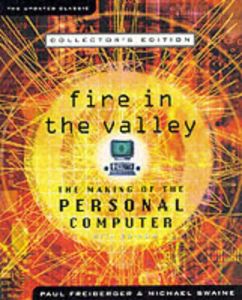Join getAbstract to access the summary!

Join getAbstract to access the summary!
Paul Freiberger and Michael Swaine
Fire in the Valley
The Making of the Personal Computer
McGraw-Hill, 2000
What's inside?
The Valley, of course, is Silicon Valley — the California hotbed that gave birth to the personal computer industry. And how? Well, big things from little transistors grow.
Recommendation
Authors Paul Freiberger and Michael Swaine offer the second edition of their extremely popular 1984 chronicle of the birth of the personal computer. They recount how the PC industry began, who fueled its growth and why things happened as they did. The central stories cover the emergence of MITS, IMSAI, Apple, Tandy and Microsoft. This second edition adds the development and maturation of the hardware and software industries. Apple and Microsoft’s sagas still dominate, but new stories emerge, including tales of Dell, Oracle, Netscape and the Internet. The second edition shows how the PC child has grown up. You’ll see how the nerds took a hobby and reformed the world using Boolean logic, integrated circuits, motherboards and chips. getabstract recommends this book to everyone with an interest in the computer industry and particularly to those who are hungry for the real stories behind the growth of the 20th century’s most pivotal industry.
Summary
About the Authors
Paul Frieberger is the co-author of Fuzzy Logic , winner of the 1993 Los Angeles Times Book Prize. He has written for the San Jose Mercury News , the San Francisco Examiner and National Public Radio and now works at the Interval Research Corporation in Palo Alto, California. Michael Swaine is editor at large for Dr. Dobb’s Journal. He is also a popular columnist for print and electronic magazines in the United States, Italy and Germany and maintains Swaine’s World, a Web site that tracks computer industry news, at www.swaine.com.


















Comment on this summary